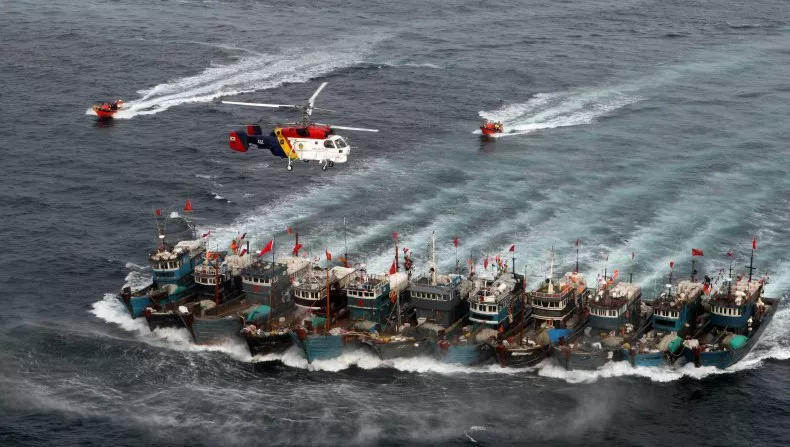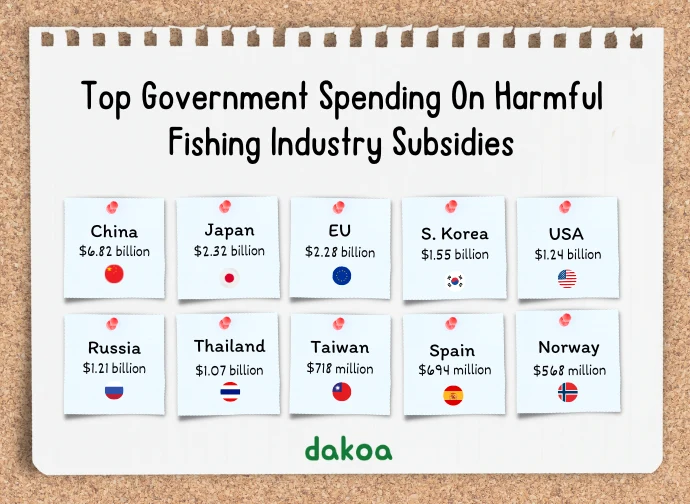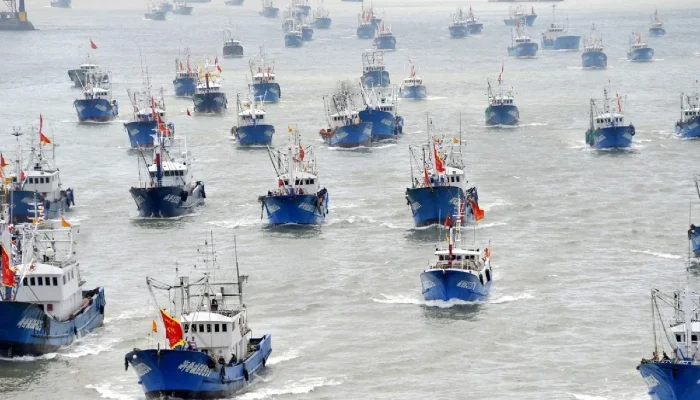The health of our oceans is under threat due to overfishing. This crisis affects not just marine life, but also millions of people who rely on fish for their food and livelihood. Since the 1990s, the number of fish caught worldwide has been dropping. This decline is set to continue if we don’t act.
Many countries, including Australia and the United States with China being the largest contributor, give financial support to their fishing industries. This support comes in various forms, such as money for fuel or making it cheaper to build boats. These subsidies encourage overfishing. Some harmful fishing methods, like bottom trawling, wouldn’t make money without these subsidies.
Scientists are calling for tough rules to stop these harmful subsidies. In recent years, these subsidies added up to $22 billion. Removing them would protect our oceans. This would also make food more secure and share marine resources more fairly.
In total, governments are handing roughly $35 billion a year to their fishing industries. This money is used for vessel construction and repair, fuel, and other expenses. We’re focusing on $22 billion of that $35 billion because $13 billion are necessary and helpful. That $13 billion is keeping smaller-scale fishers in business during hard times and allowing families to fix their single fishing boat.
But most of the money is harmful subsidies. They’re funding massive industrial fleets that don’t need the money and are using it to accelerate overfishing, often to illegal proportions.

Trade ministers from around the world will meet soon in Abu Dhabi. They are part of the World Trade Organization (WTO). A group of 36 marine experts, including us, wrote an open letter. We asked the WTO to make strong rules for sustainable fishing and to stop harmful subsidies.
There’s been a long wait for an agreement on this issue. Scientists’ international pressure led to an agreement on fishing subsidies. This agreement was made in June 2022 but hasn’t been approved yet. It needs approval from two-thirds of WTO members. This deal aims to stop subsidies that support illegal fishing and the overfishing of depleted stocks.
However, experts believe the agreement doesn’t go far enough. It doesn’t cover all harmful subsidies. Many subsidies that lower costs and let boats fish longer and farther are still in place.
11 Highest Fishing Subsidies By Country (In Millions)
Country
Beneficial
Harmful
Total
China
434
6,827
7,261
European Union
1,523
2,280
3,803
USA
2,187
1,242
3,429
South Korea
1,635
1,550
3,185
Japan
534
2,326
2,860
Russia
295
1,216
1,512
Thailand
74
1,075
1,149
Canada
388
465
853
Norway
278
568
846
Spain
150
694
844
Taiwan
69
718
787
11 Highest Fishing Subsidies By Country (In Millions)
Good
Bad
Total
China
434
6,827
7,261
EU
1,523
2,280
3,803
USA
2,187
1,242
3,429
Korea
1,635
1,550
3,185
Japan
534
2,326
2,860
Russia
295
1,216
1,512
Thailand
74
1,075
1,149
Canada
388
465
853
Norway
278
568
846
Spain
150
694
844
Taiwan
69
718
787
The Impact of Fisheries Subsidies Goes Beyond The Oceans
The issue of fisheries subsidies extends far beyond the immediate impact on marine populations; it’s a web that snags environmental, social, and economic threads. For years, scientists have been highlighting the far-reaching consequences of these financial aids, pointing out their role in destabilizing marine ecosystems and diminishing biodiversity.
These subsidies not only fuel practices that deplete fish stocks but also contribute to increased CO₂ emissions, exacerbating the climate crisis.
The narrative around fisheries subsidies is evolving, with recent research adopting a more nuanced, social lens. Seafood represents a lifeline for millions worldwide, offering a way out of hunger, malnutrition, and poverty. However, as industrial overfishing continues to deplete fish stocks, the threat to this vital source of food and nutrients grows more severe.
Intriguingly, the discourse on “equity” in relation to fisheries subsidies reveals a stark disparity in their impact. The communities most affected by overfishing, often situated in developing countries, aren’t the ones benefiting from the subsidies. Instead, these subsidies enable foreign fleets, backed by the financial might of wealthy nations, to exploit the marine resources of less affluent countries.
This exploitation not only harms the marine environment, but also the people who depend on it for their livelihoods and sustenance.
The injustice of fisheries subsidies is further underscored by their contribution to unfair competition. This is vividly illustrated in the Indian Ocean, where the amount of subsidies provided to industrial fishing operations mirrors the volume of seafood exported to international markets.
This dynamic predominantly benefits affluent, food-secure nations at the expense of local communities.
Such policies empower industrial fleets to harvest seafood for export, neglecting the needs of local populations who rely on these fisheries for their daily sustenance.

The Global Landscape of Fisheries Subsidies: A Closer Look
Not all countries are equal contributors to the problem of harmful fisheries subsidies. A staggering 70% of such financing comes from just 10 countries. Leading this group are China, Japan, and the European Union. Their large distant water fishing fleets often operate in the waters of less-developed countries.
Australia stands out for its minimal contribution to the issue, accounting for only 0.1% of global harmful subsidies. Of Australia’s annual US$400 million in fisheries subsidies, just 6% is deemed harmful. Although there’s room for improvement, Australia’s modest US$25 million annual subsidy to its fishing sector positions it as a potential leader in sustainable and equitable fishing practices.
Seizing the Moment for Change
A pivotal moment is on the horizon with the upcoming WTO Ministerial Conference in Abu Dhabi this February. This conference is a golden chance to make a significant positive impact on ocean conservation.
More To Discover
- Tiny Nuclear Battery Promises 50-Year Phone Charge, Breaking Radioactive Ground
- Exposed: The Climate Benefits of Cookstove Carbon Offsets Have Been Overstated By 1,000%
- Report Reveals Over Half of U.S. ‘Climate-Smart’ Farm Funds Do Nothing
- Why Bioplastics Aren’t the Eco-Solution We Hoped For (Australia Is The Perfect Example)
As this crucial meeting approaches, there’s a collective call to action for nations to adopt stricter rules against harmful subsidies. These new regulations should focus on ensuring the sustainability of fisheries and promoting fairness in ocean resources use.
The consensus is clear: harmful fisheries subsidies are both ecologically damaging and fundamentally unjust. With a solid foundation of research and evidence, the push for the WTO to eliminate these subsidies is stronger than ever. This step is essential for the future health of our oceans and the communities that depend on them.



















